Raby Castle’s recent landscape design scheme and remodelled 18th century Walled Gardens have been nominated in the prestigious and much-anticipated 2025 European Garden Awards.
Shortlisted in the Management or Development of a Historic Park or Garden category, the chance to be recognised alongside other notable European historic gardens has been taken as a great compliment by all at Raby Castle, Park and Gardens in County Durham.
Lady Barnard, creative director and custodian of Raby Castle and Estates said: “Everyone involved in this project, from its initial inception to its ongoing daily maintenance, was overjoyed to learn that our gardens and landscape have been nominated in such a notable award scheme.
“It is recognition of the team’s hard work and unwavering talent which has breathed new life into the beautiful gardens, whilst sympathetically remembering the space’s wonderful past and legacy. I for one am very proud of what we’ve achieved here and can’t wait to see it in full bloom again, as it continues to flourish season after season.”
The redesign of Raby Castle’s extensive public areas throughout the grounds was part of a landmark three-year regeneration project, which was completed in 2024.
Led by acclaimed landscape architect Alistair Baldwin, the project recaptured the sociable community feel of Old Raby village, which existed beyond the castle walls, throughout the thoughtfully designed landscaped areas. These spaces now connect several historic buildings that have been sympathetically restored to their former glory.
Alistair said: “During the planning and design stage, we wanted to provide Raby’s community, including visitors from far and wide, with a series of beautiful spaces to meet and mingle. It’s wonderful to now see these areas bursting with life and character, featuring different yet interchangeable planting designs.
“Our aim was also to replicate the sense of a traditional village connecting the various elements of the castle grounds together, providing sociable spaces where people can come together, shop, dine, meet and enjoy the gardens. This closely aligned with Raby’s ethos for the overall development, and it’s always a rewarding experience to pay a visit to Raby Castle and watch everyone enjoy and soak up these spaces – just as we intended.
“As someone who is from the nearby area with Raby holding special memories for me, it was an absolute honour to bring Lord and Lady Barnard’s vision to life. To also be acknowledged with this international award nomination is a fantastic addition to what has been one of the stand-out projects in my career.”
The award nomination has also acknowledged the remodelling of the 300-year-old Walled Gardens which were transformed as part of the three-year development. World-renowned garden designer Luciano Giubbilei led the redesign of Raby’s five-acre space in creative collaboration with Lady Barnard.
Luciano, who was selected as garden designer of the year in the House & Garden Design Awards 2024, is one of Britain’s most successful garden designers and the redesigned Walled Gardens at Raby Castle are his first public project.
Luciano said: “The Walled Garden at Raby Castle is an extraordinary space. Beyond the specifics of the planting, there was a need to make a garden that is charged with atmosphere and a restored spirit of place, in which the character of Raby and its rich history is embedded.
“It was important to refine and enhance relationships between the walled garden and the castle, and between the walled garden and the surrounding landscape. The vision is of a place that people want to return to repeatedly, for its beauty and peacefulness, to observe the changing of the seasons and to participate in the annual cycle of events.
“The main compartments follow the historical division into three separated spaces. Within the Formal Garden, the yew hedges and circular water feature represent surviving iconic elements of the historic garden. The design builds on these existing entities, forming a continuous proximity to water, from the point of arrival in the garden, down to the lower gate, echoing the natural slope of the land and the movement of people.
“A structural evergreen garden amplifies the undulating presence of the ancient hedges, while geometric parterres are punctuated by pockets of softness, provided by a scattered canopy of flowering trees.
“In the East Garden, lower terraces open out allowing people to gather in numbers on the tiered steps, acting as a natural amphitheatre with scope to accommodate open-air performances. The upper part is laid out as a contemporary display of perennial planting where more intimate spaces encourage moments of pause and rest, while accentuating views of the castle.
“This is flanked on either side by more private, enclosed areas, distinct from the surrounding landscape, with meandering paths, woodland planting and trees that momentarily obscure the castle, forming a ‘hide and seek’ exchange between the castle and the visitors.
“The West Garden is home to a display of Yew topiary set into a geometric pattern of grasses. A raised pergola disguises the traditionally working portion of the garden from the castle. We have reinstated the greenhouse that once stood along the upper north wall and allowed for the cultivation of plant varieties that require warmer temperatures. The far corner of West Garden is home to a cutting garden with an abundance of flowers throughout the seasons.”
The 2025 European Garden Awards will be hosted in June in Schloss Dyck (Germany) where Raby Castle’s Garden team will discover the winner of their category.
The awarding body, the European Garden Heritage Network, run the annual competition which sees entries from France, UK, Germany, Belgium, the Netherlands, Italy, Sweden, Denmark, Ireland, Austria, Poland, Portugal, Spain, and Switzerland, and 2025 will the award’s fifteenth year.
For more information about Raby Castle, Park and Gardens, please visit: www.raby.co.uk/raby-castle

